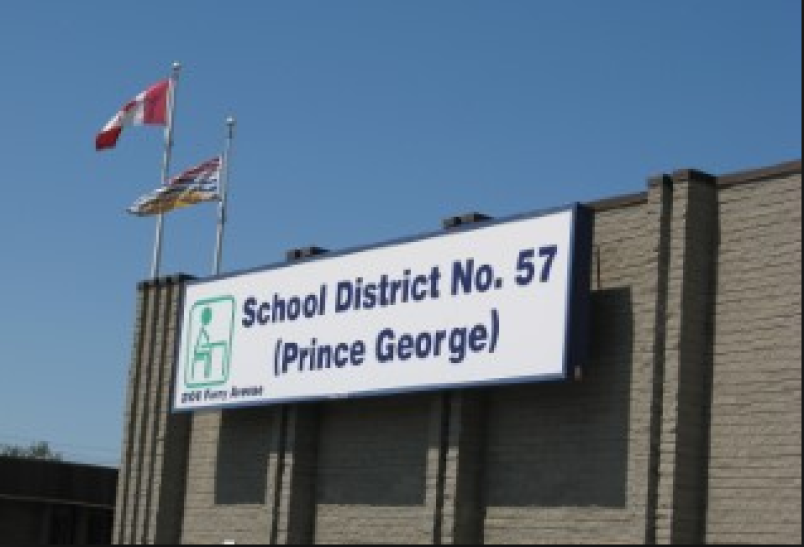School District 57’s board of education passed a balanced budget on Tuesday night, after the district was forced to find $2.2 million in cuts to offset rising costs.
The budget was originally considered by the board during a special meeting on May 16, and followed by 10 days of additional public consultation from May 17 to May 27.
“We are looking at almost a seven per cent inflation rate. How are we going to continue funding what we are doing if (provincial) funding is not increased?” trustee Tim Bennett said. “Without funding being increased at least at the rate of inflation, it is a cut to services.”
The district is projecting to bring in $173 million in revenue for the 2023 school year, but anticipated nearly $175 million in operating expenses, according to a report which was presented to the board. The district was able to use more than $100,000 of accumulated surpluses from last year to offset some of the rising costs, but the remainder was found through cuts to the district’s facilities and central administration departments, secretary treasurer Darleen Patterson said.
The savings were found by the removal of unfilled staff positions, eliminating two utility vehicles and reducing the budgets for “dual coverage” when teachers and staff are away, professional development and travel, snow removal, furniture and equipment replacements, supplies and resources and software licenses, Patterson reported.
“None of the cuts are in schools,” Patterson said. “(But) you can’t cut in the facilities department and not feel it eventually.”
The number of full-time equivalent students attending school in the district is projected to drop slightly, from 13,143.7 in 2022 to 13,068.9 in 2023.
“When you have flat enrollment and unchanged per-student funding, you have very similar revenues,” Patterson said. “All our contracts for transportation are 30 per cent higher than in previous years. Our capital contracts are coming back 25 to 50 per cent higher than the ministry estimated. We had these incremental costs, matched with flat revenue.”
Another driver for rising costs for the district is the negotiated salaries increases for the district’s unionized teachers and staff, Patterson added. The district has been forced to reduce the scope of its capital projects to do as much as it can within the money available.
District chairperson Sharel Warrington said the board is legally obligated to pass a balanced budget, and could be removed by the minister of education if they fail to do so.
The district was able to find $2.2 million in cuts this year, but unless something changes the new board will be facing even more challenges next year at budget time, she said.
“There will, ultimately, be a time when we will have a sustainability issue,” Warrington said. “We will, indeed, be facing a very significant challenge next year. We are just extending the need to have a sustainability discussion to next year.”
However, she said, there is still time for the provincial government to come forward with additional funding to help school districts across the province face the inflationary challenges ahead of them.
“We need to push the government that we aren’t alone here,” she said. “A lot of districts… will face challenges next year.”
Trustee Milton Mahoney was the sole vote against the final reading of the budget on Tuesday.
“I cannot, with my own conscious, agree with it. Sometimes you have to look at cuts at the top, and not seeing that bothers me,” Mahoney said. “When I see cuts that are necessary, I feel cuts should be passed around.”
Prince George and District Teachers Association president Joanne Hapke said she’s concerned the cuts will end up trickling into the classroom.
“I am worried that the commitments that are being made to our students will not be met. Will the services be there for students?” Hapke asked. “Teachers have tried. Support staff have tried. We continue to do more with less. We can’t keep doing that.”
District Parent Advisory Council chairperson Laura Weller said the district will be facing financial challenge over the next few years following the COVID-19 pandemic. Weller said she had confidence in the district staff and administration to manage the budget shortfalls.
“The emphasis right now for parents is on inclusion and equity,” Weller said.



